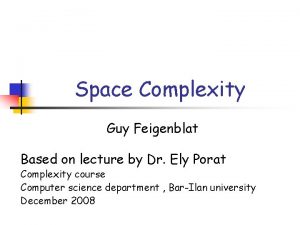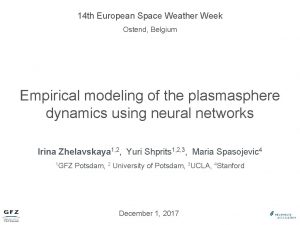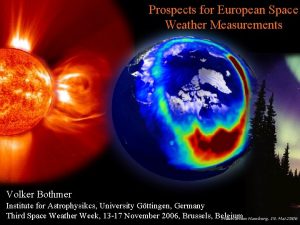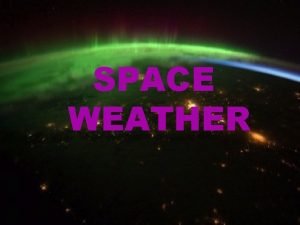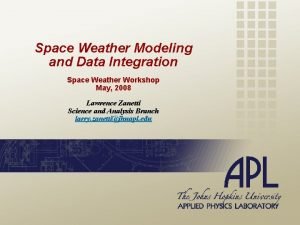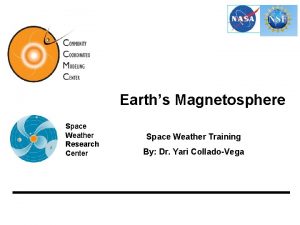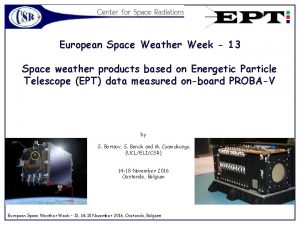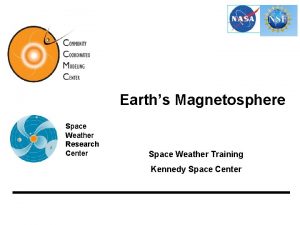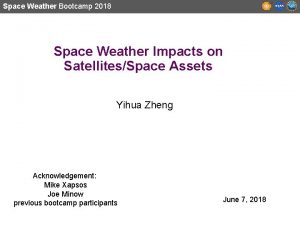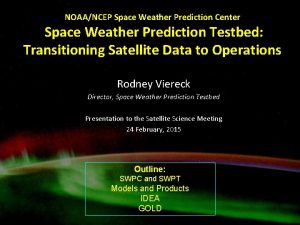Topics in Space Weather Lecture 14 Space Weather











![Another Example: Same Satellite 30 Years Apart 12 Emmert et al. [2004] Another Example: Same Satellite 30 Years Apart 12 Emmert et al. [2004]](https://slidetodoc.com/presentation_image_h/0ee99ce8ea7fd19d902e8c4b5c1530ab/image-12.jpg)
![Secular Trend from 27 Objects from 1966 - 2001 13 Emmert et al. [2004] Secular Trend from 27 Objects from 1966 - 2001 13 Emmert et al. [2004]](https://slidetodoc.com/presentation_image_h/0ee99ce8ea7fd19d902e8c4b5c1530ab/image-13.jpg)

- Slides: 14

Topics in Space Weather Lecture 14 Space Weather Effects On Technological Systems Robert R. Meier School of Computational Sciences George Mason University rmeier@gmu. edu CSI 769 29 November & 6 December 2005 1

Topics • Meier – Introductory comments – Drag effects on orbiting space objects – Thermospheric density decreases due to greenhouse gas cooing • Goodman – Introduction to Space Weather & Technological Systems – Telecommunication Systems and Space Weather Vulnerabilities – Large Storms and Impacts upon Systems – Modeling and Compensation Methods used in Practice – Prediction Systems & Services 2

Solar Radiation and Plasma Can Affect Earth Solar radiation, magnetospheric and galactic particles ionize and heat Earth’s atmosphere and ionosphere spacecraft drag, collisions, loss communications & navigation March 1989 Auroral Ova Power System Eve aurora currents induced in power grids spacecraft detector upsets hazards to humans in space ozone depletion in major events speculated climate impacts www. nas. edu. ssb/cover. html Lecture 14 3 LASCO

Effect of Drag on Satellite Orbits • Assume elliptical orbit a = semi-major axis m= satellite mass M = Earth mass >> m G = gravitational constant • Calculate change in a resulting from drag • Expressions derived from Kepler’s Laws 4

Drag, cont. The dynamical equation to be solved is – 1 st term on the rhs is the centripetal acceleration, Fg – 2 nd term is the drag force FD – The orbital speed is: Fg v 2 a 5

Drag, cont. F = rate of change of momentum, L • The drag force is A mass v dx • CD = drag coefficient – Accounts for • Momentum transfer on all sides • Fluid flow around satellite • Turbulent effects = air density in Adx A = satellite front surface area v = satellite velocity – Is a function of speed, shape, air composition, and aerodynamic environment – CD = 2. 2 for a spherical satellite around 200 km 6

Drag, cont. • The total energy is: • The orbital period is: 7

Drag, cont. • The work done by drag is: • The rate of change of energy due to drag is: Solving for da/dt & substituting for FD: • The rate of change of orbital period is: 8

Drag, cont. • Eliminating da/dt from the last two equations on slide 10, and substituting in for the drag force leads to: • The relative change in orbital period over 1 rev is: • The rate of change of period depends on B = CDA/m (the ballistic coefficient) • If orbital parameters and the ballistic coefficient are known, the average atmospheric density can be determined 9

Decay of Elliptical Orbit 10

A Simple Example: Decay Rate of the Solar Max Mission (SMM) Satellite 11 Courtesy, J. Lean
![Another Example Same Satellite 30 Years Apart 12 Emmert et al 2004 Another Example: Same Satellite 30 Years Apart 12 Emmert et al. [2004]](https://slidetodoc.com/presentation_image_h/0ee99ce8ea7fd19d902e8c4b5c1530ab/image-12.jpg)
Another Example: Same Satellite 30 Years Apart 12 Emmert et al. [2004]
![Secular Trend from 27 Objects from 1966 2001 13 Emmert et al 2004 Secular Trend from 27 Objects from 1966 - 2001 13 Emmert et al. [2004]](https://slidetodoc.com/presentation_image_h/0ee99ce8ea7fd19d902e8c4b5c1530ab/image-13.jpg)
Secular Trend from 27 Objects from 1966 - 2001 13 Emmert et al. [2004]

Secular Trend • Density decreases consistent with theoretical predictions of greenhouse gas increases with thermospheric GCMs – Heating of troposphere – Cooling of stratosphere, mesosphere and thermosphere • Observation: – Emmert et al. [J. Geophys Res. , 109, A 02301, 2004] • Theory: – Roble, R. G. , and R. E. Dickinson [Geophys. Res. Lett. , 16, 1441– 1444, 1989] 14
 01:640:244 lecture notes - lecture 15: plat, idah, farad
01:640:244 lecture notes - lecture 15: plat, idah, farad Weather model symbols
Weather model symbols Whether the weather tongue twister
Whether the weather tongue twister Poems about seasons changing
Poems about seasons changing Windy
Windy Weather and whether
Weather and whether Heavy weather by weather report
Heavy weather by weather report Capital weather gang weather wall
Capital weather gang weather wall Space weather family guy
Space weather family guy European space weather week
European space weather week Volker bothmer
Volker bothmer Unscented trajectory chapter 5
Unscented trajectory chapter 5 Space junk the space age began
Space junk the space age began Camera space to world space
Camera space to world space Unscented trajectory chapter 5
Unscented trajectory chapter 5








